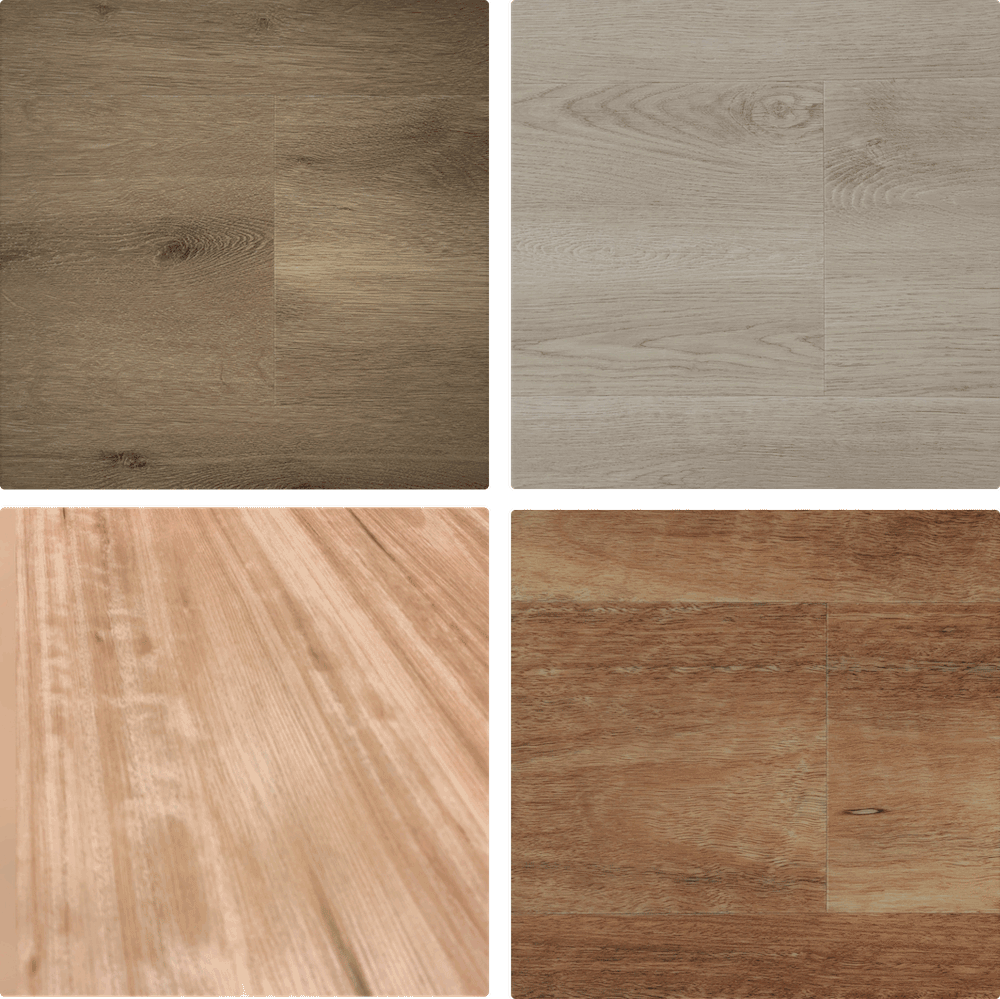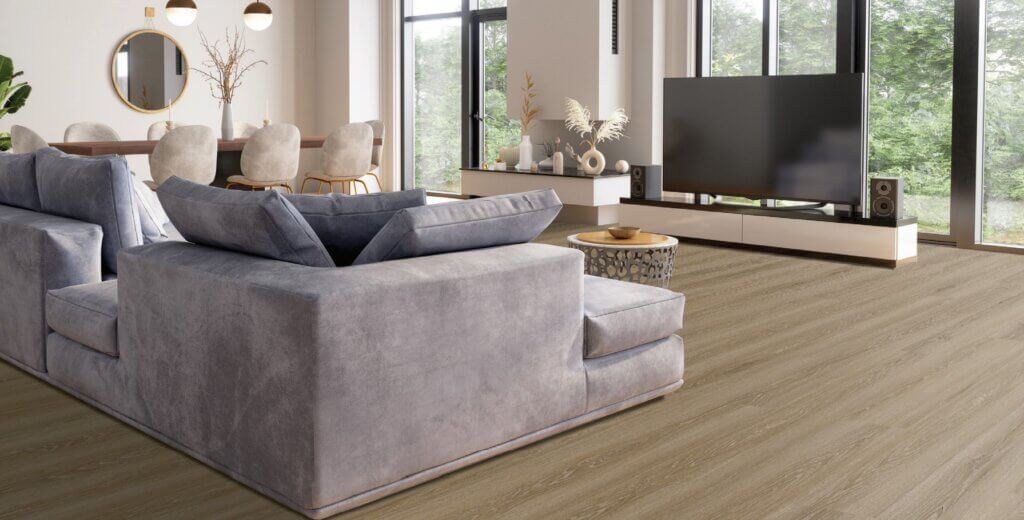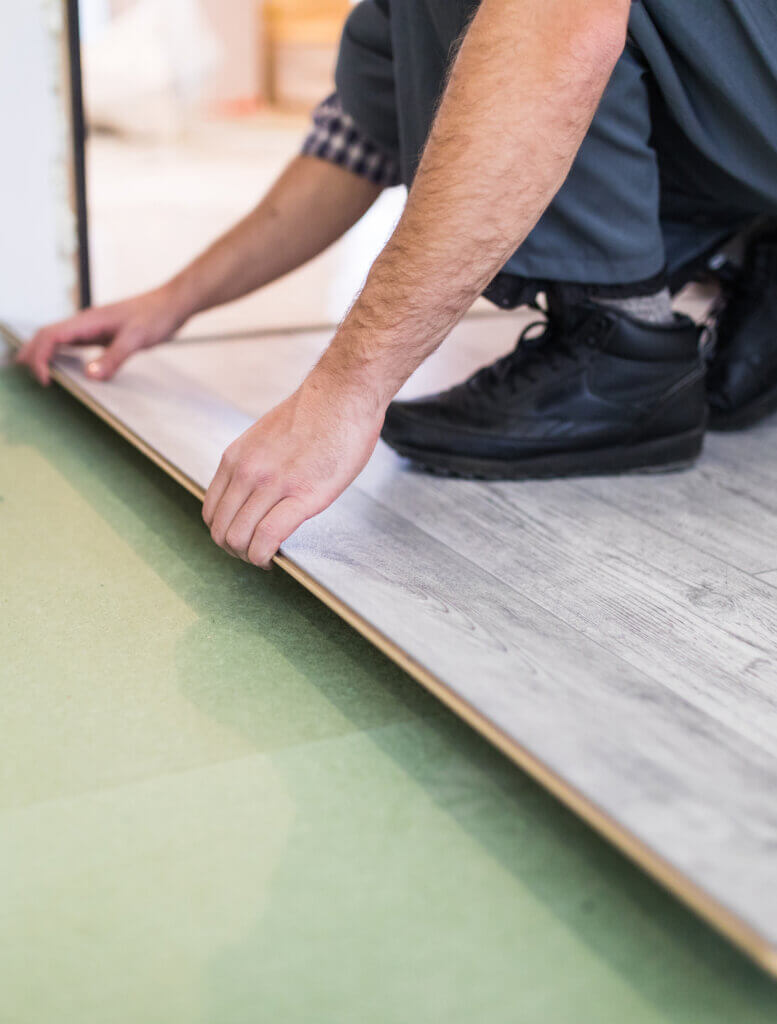Hybrid flooring represents the cutting edge of flooring innovation, offering 100% waterproof capabilities. As open plan living gains traction, Hybrid has emerged as a simple, hassle-free solution for homes that prioritize a carefree lifestyle. By blending the finest attributes of various flooring types, Hybrid Flooring transcends traditional options and sets a new standard in modern flooring technology.

Explore our impressive collection of hybrid flooring that effortlessly combines aesthetics and practicality. Our range showcases a diverse selection of styles and finishes that hyrid flooring has to offer.
Hybrid Flooring is a ideal choice for both residential and commercial settings. Whether you’re a seasoned DIY enthusiast or a first-timer, our hybrid flooring solutions are engineered to ensure a hassle-free installation process. Discover the possibilities and reimagine your floors with our stunning range of hybrid flooring solutions.

Curious about our hybrid flooring but unsure if it’s the right fit for your space? Ordering a sample is an easy and convenient way to experience the quality and aesthetics firsthand.
Seamless DIY Installation:: Hybrid flooring often comes with user-friendly installation systems, such as click-lock mechanisms, that make it easy for homeowners to install themselves. This not only saves time and money but also reduces the hassle of finding a professional installer.
Exceptional Durability: Hybrid flooring’s composition, merging the strength of different materials, results in exceptional durability. This is perfect for spaces with heavy foot traffic, ensuring your floor retains its stunning appearance for years.
Realistic Aesthetics, Real-World Convenience: With advanced printing technology, hybrid flooring captures the genuine look of hardwood or stone. The result is an authentic and visually appealing flooring solution that requires minimal maintenance.s.
Versatility for Every Space: Be it for homes or businesses, hybrid flooring offers versatility that matches diverse design preferences. With an extensive array of styles, colors, and patterns, you’re bound to find the perfect hybrid flooring for your unique interior decor.

Hybrid flooring is an innovative type of flooring that combines the best features of various materials, including tile and wood. It offers the durability of tile and the aesthetic appeal of wood, creating a unique and versatile flooring option.
Hybrid flooring offers a blend of characteristics from both tile and wood flooring. It has the toughness and water-resistance of tile while providing the authentic look of wood. This makes it a great choice for areas where traditional wood flooring might not be suitable, like bathrooms or kitchens.
Yes, absolutely. Hybrid flooring’s durable construction makes it an excellent choice for high-traffic areas. It can withstand the wear and tear that comes with heavy foot traffic, making it ideal for both residential and commercial spaces.
Yes, hybrid flooring is an excellent solution for wet areas like bathrooms. Its waterproof properties make it highly resistant to moisture, making it a practical and visually appealing choice for areas prone to spills and humidity.
Hybrid flooring is often designed with user-friendly installation systems, such as click-lock mechanisms. This allows for a straightforward installation process, and some varieties even offer the option for DIY installation.
Yes, hybrid flooring is relatively easy to maintain. Its tile-like surface makes it simple to clean, and its durability ensures it can withstand regular cleaning without showing signs of wear.
Absolutely. Hybrid flooring comes in a variety of styles and colors to suit various interior design preferences. Whether you’re looking for a classic wood look or a more modern tile appearance, there’s likely a hybrid flooring option that fits your style.
Yes, hybrid flooring can be a great choice for families with kids and pets. Its durability, scratch-resistance, and water-resistance qualities make it an ideal flooring option for households with active lifestyles.
Yes, hybrid flooring is versatile and can be installed in most rooms of your home. From living rooms to kitchens, bedrooms to hallways, its suitability extends across various spaces, offering consistent performance and aesthetics.
Hybrid flooring’s long lifespan, combined with its resistance to damage and ease of maintenance, can make it a cost-effective choice over time. While initial costs may vary, its durability and low maintenance needs can translate to long-term savings.

Thank-you for visiting our online tile shop! If you have any questions about tiles online, don't hesitate to reach out :)
Office Location: 13 Byres Steet, Newstead, 4006
© 2024 All Rights Reserved.